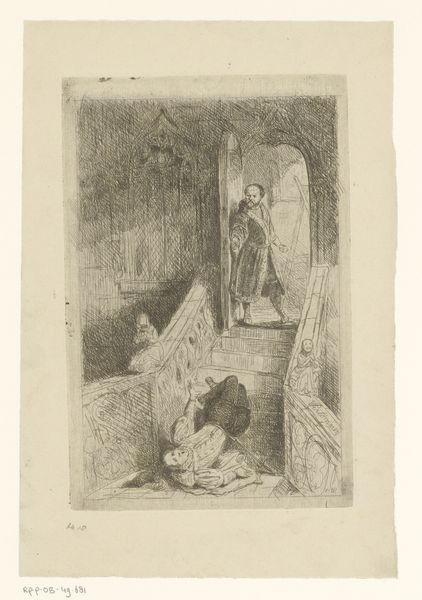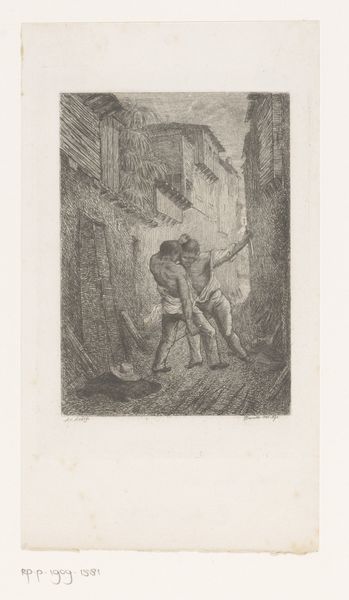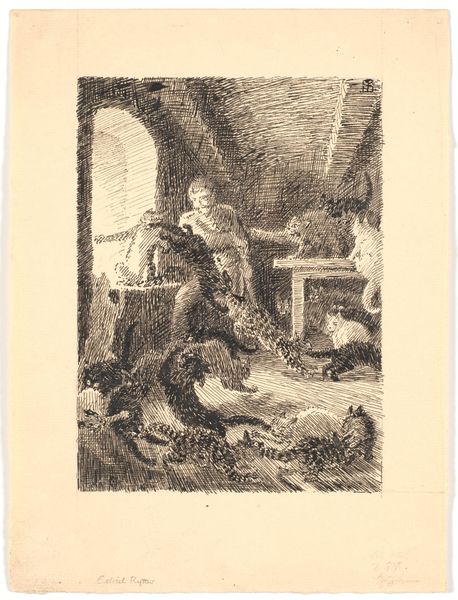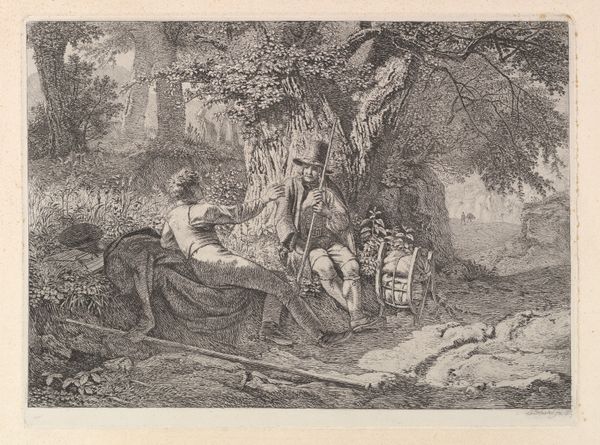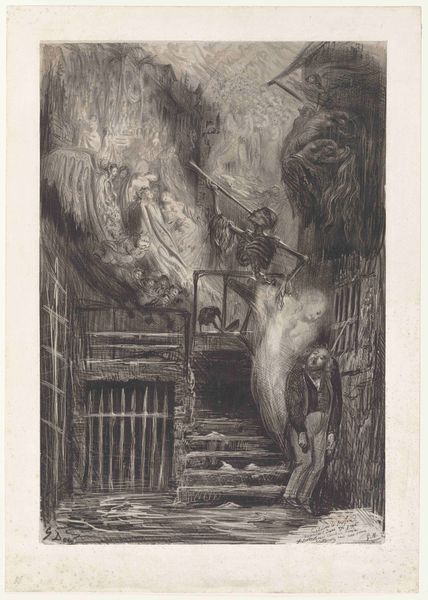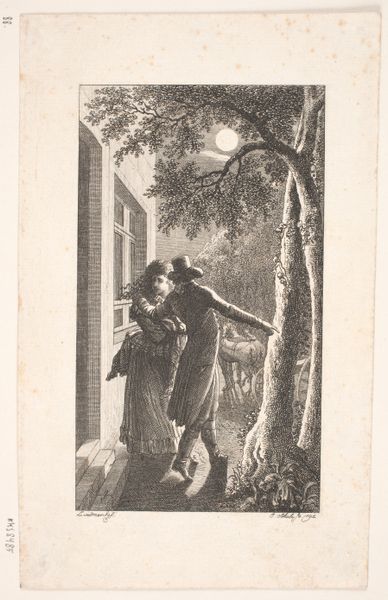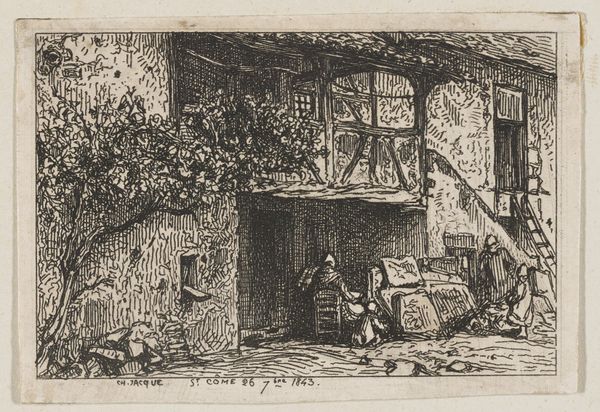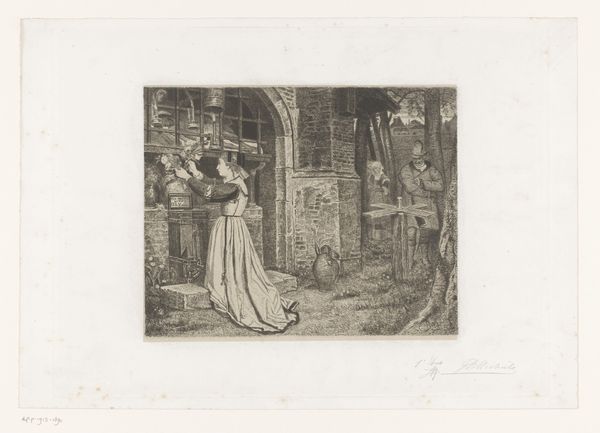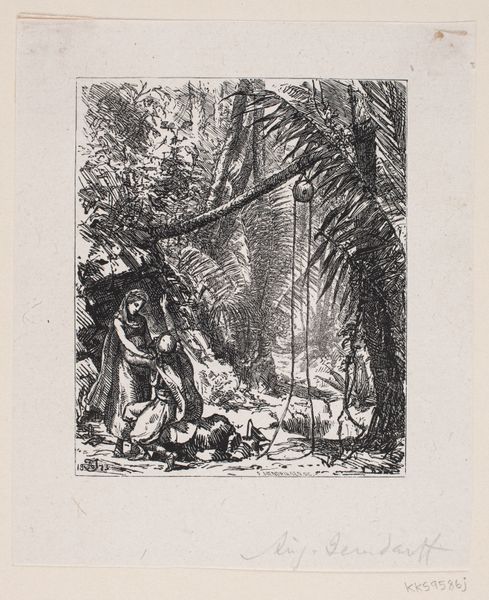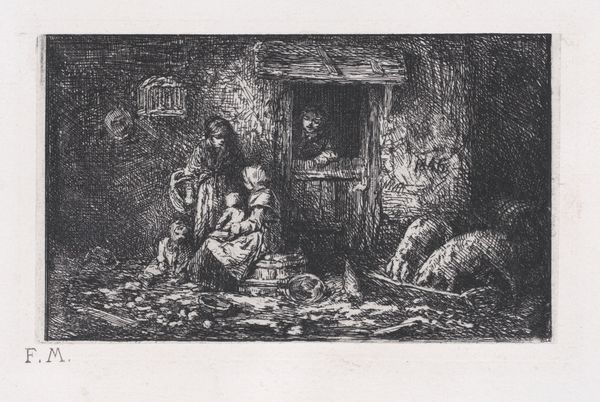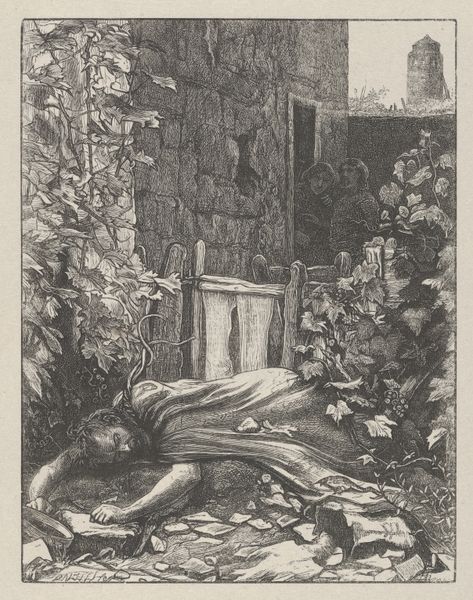
Dimensions: sheet: 7 11/16 x 8 1/16 in. (19.5 x 20.5 cm) plate: 3 15/16 x 2 9/16 in. (10 x 6.5 cm)
Copyright: Public Domain
Charles Jacque made this print, Ferme au puits, using etching, a printmaking technique that gives the image its distinctive character. The artist covers a metal plate with a waxy, acid-resistant substance, then draws an image with a pointed tool, exposing the metal. The plate is then bathed in acid, which bites into the exposed lines, creating grooves. The depth of the lines determines how much ink they hold, and thus the darkness of the printed mark. See how Jacque uses close, shallow lines to create a sense of shadow. The finished plate is inked and pressed onto paper, transferring the image. This process allowed Jacque to make multiple, identical images, a key development in the mass distribution of art. Here, the process perfectly suits the subject. The hard labor of rural life is emphasized in the print; the woman is shown mid-task, drawing water in a way that is both beautiful and grounded in the realities of work. By understanding the materials and making, we gain a deeper appreciation of the image, and the social context that it represents.
Comments
No comments
Be the first to comment and join the conversation on the ultimate creative platform.
